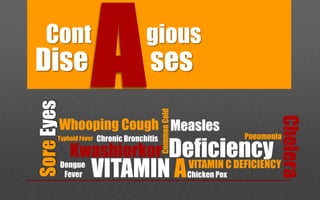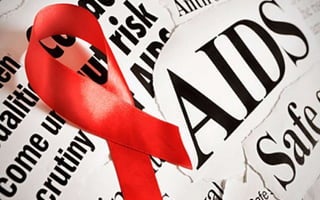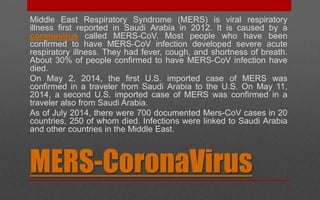This document summarizes several common contagious diseases including their symptoms, causes, and prevention methods. It discusses diseases like conjunctivitis, chronic bronchitis, the common cold, chickenpox, cholera, whooping cough, measles, pneumonia, tuberculosis, and more. For each disease, it provides 2-3 key symptoms and highlights important actions people can take to prevent the spread of disease and seek treatment if needed.









































































